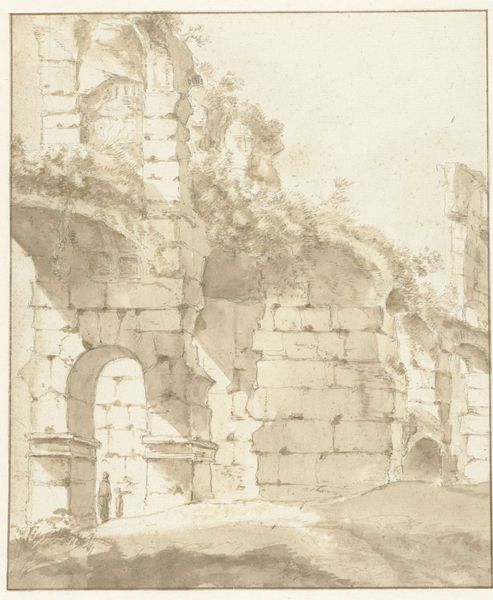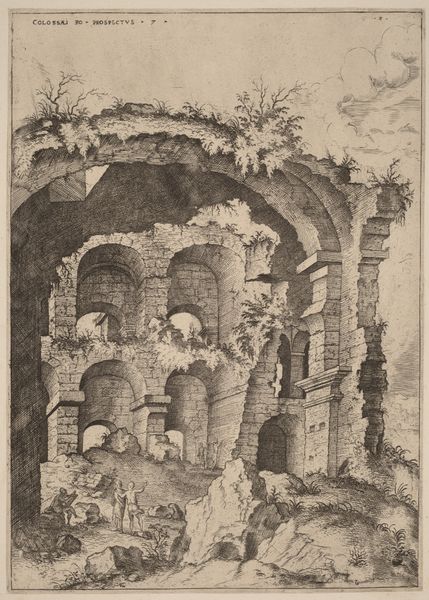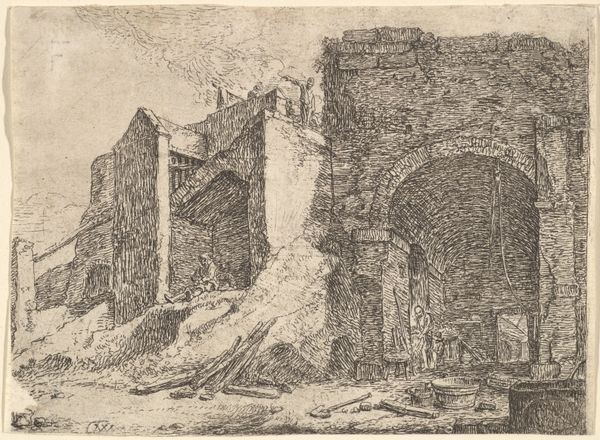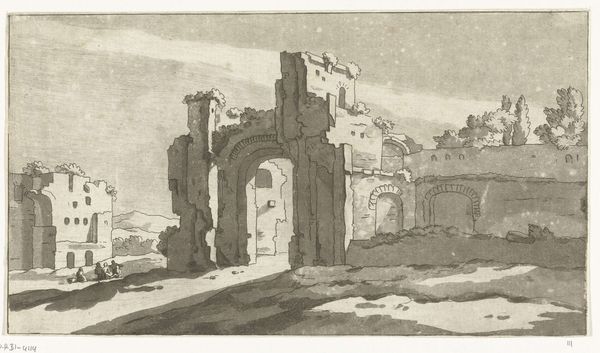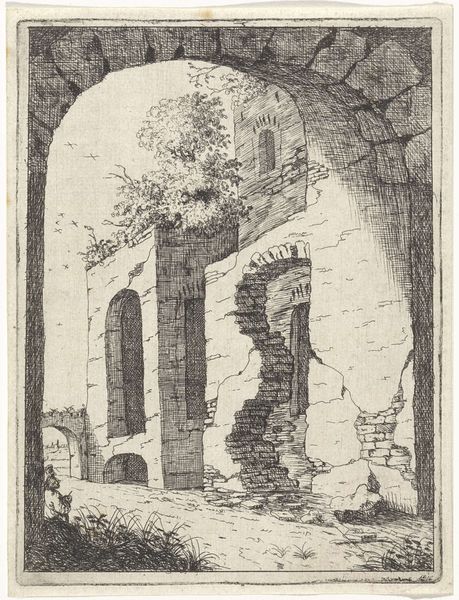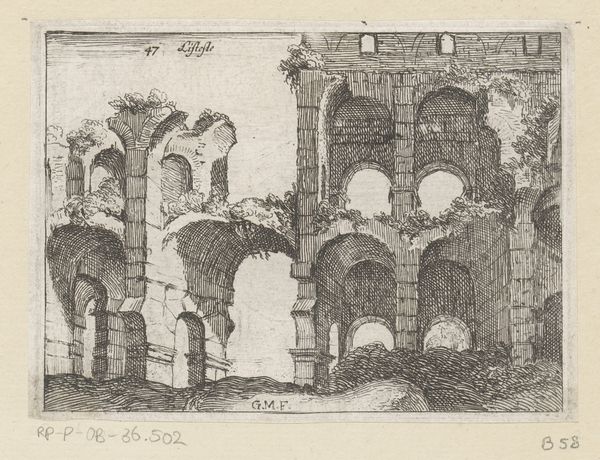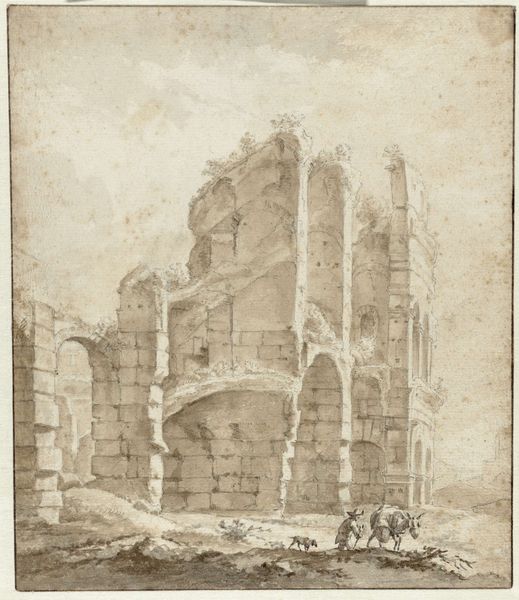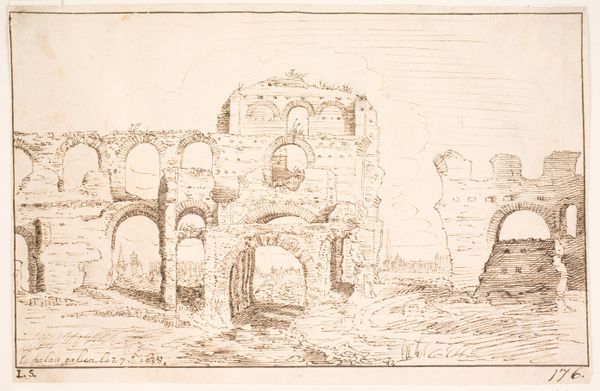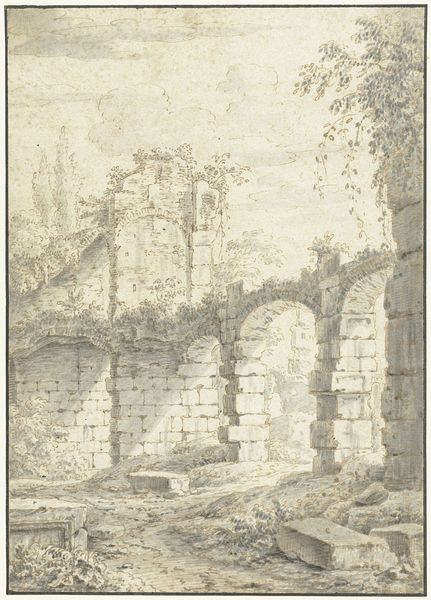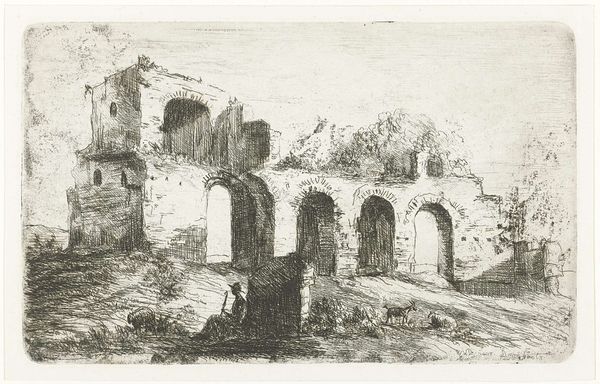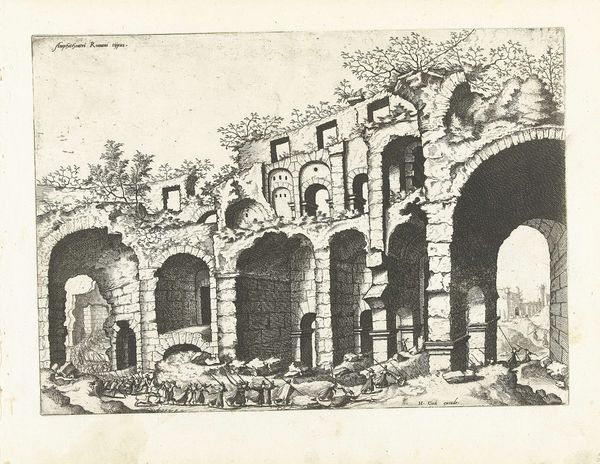
drawing, ink, architecture
#
drawing
#
romanesque
#
ink
#
ancient-mediterranean
#
line
#
cityscape
#
architecture
Dimensions: height 278 mm, width 205 mm
Copyright: Rijks Museum: Open Domain
Editor: Here we have Adriaen Honich's "View in the Colosseum, Rome," from around 1667 to 1680. It's an ink drawing, quite striking in its starkness. The ruins are so meticulously rendered. How do you approach a work like this, where the subject is so much about material decay? Curator: I immediately think of the labour involved. Consider the Roman builders, quarrying, transporting, and assembling those colossal blocks. Then fast forward to Honich, the artisan recreating this monumental architecture using relatively inexpensive ink and paper. It's a commentary on the passage of time and how value shifts, isn't it? Editor: That’s a very interesting point, I never considered the comparison of the materiality. Can you expand on the idea of value shifting? Curator: The Colosseum, originally a site of spectacle and power, is now presented as a ruin, a source of artistic inspiration and tourism. Honich, by choosing drawing—a readily available and portable medium— democratizes this symbol of imperial might. He is saying something about access and ownership through artistic production. Editor: So the choice of ink, a relatively common material, challenges the Colosseum's historical significance? Curator: Precisely! It subtly questions what we deem "high" art and whose stories get told. Look at the detail in the stones – each stroke represents a unit of labor, echoing the original construction but also, significantly, Honich’s own artistic labor and the cultural fascination with ruins as commodities. Editor: So much more than just a pretty picture of an old building! It really highlights how materials shape our understanding of history and power. Curator: Indeed! It prompts us to consider the social context of artmaking, how materials both reflect and challenge existing power structures.
Comments
No comments
Be the first to comment and join the conversation on the ultimate creative platform.
